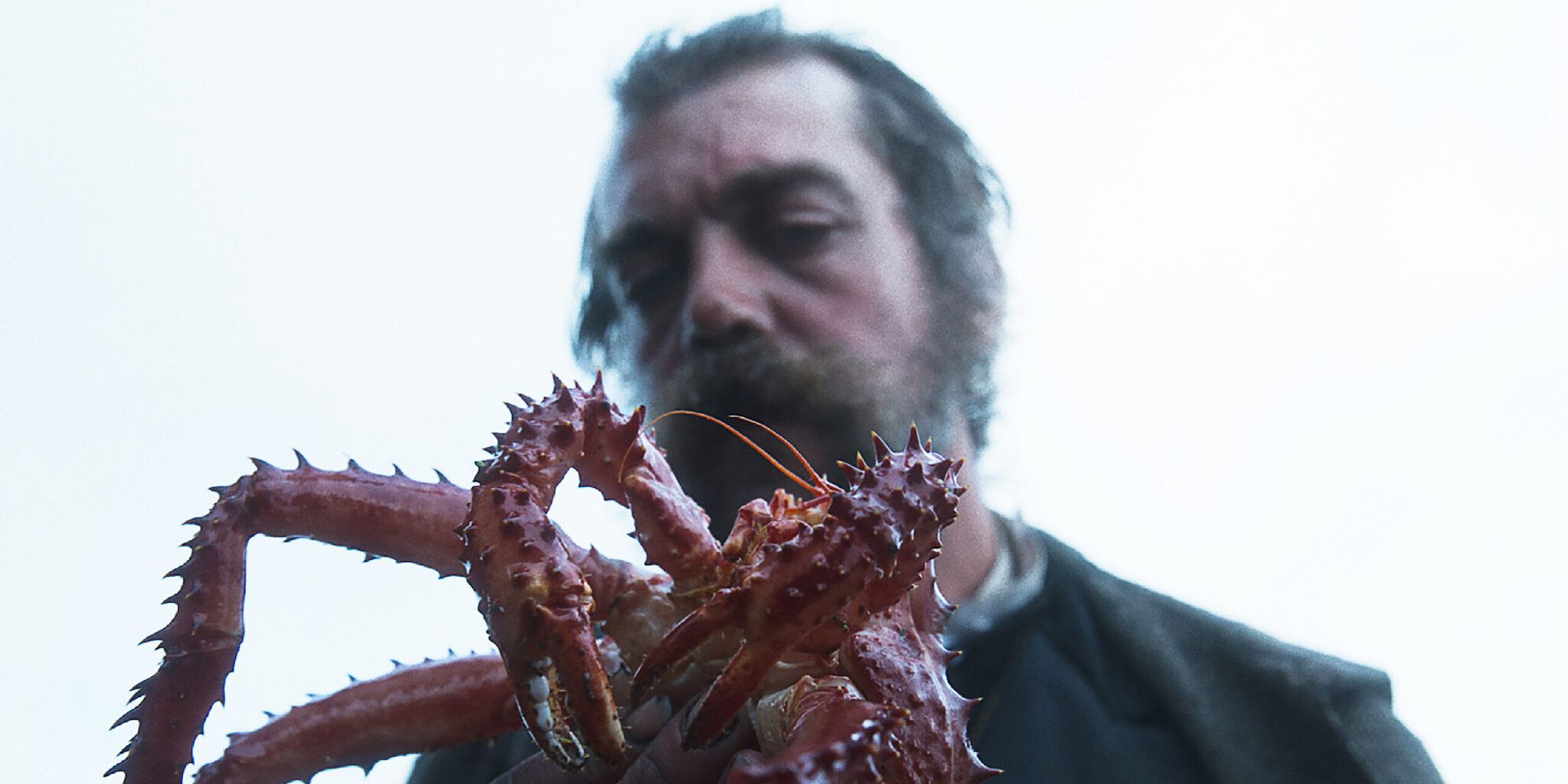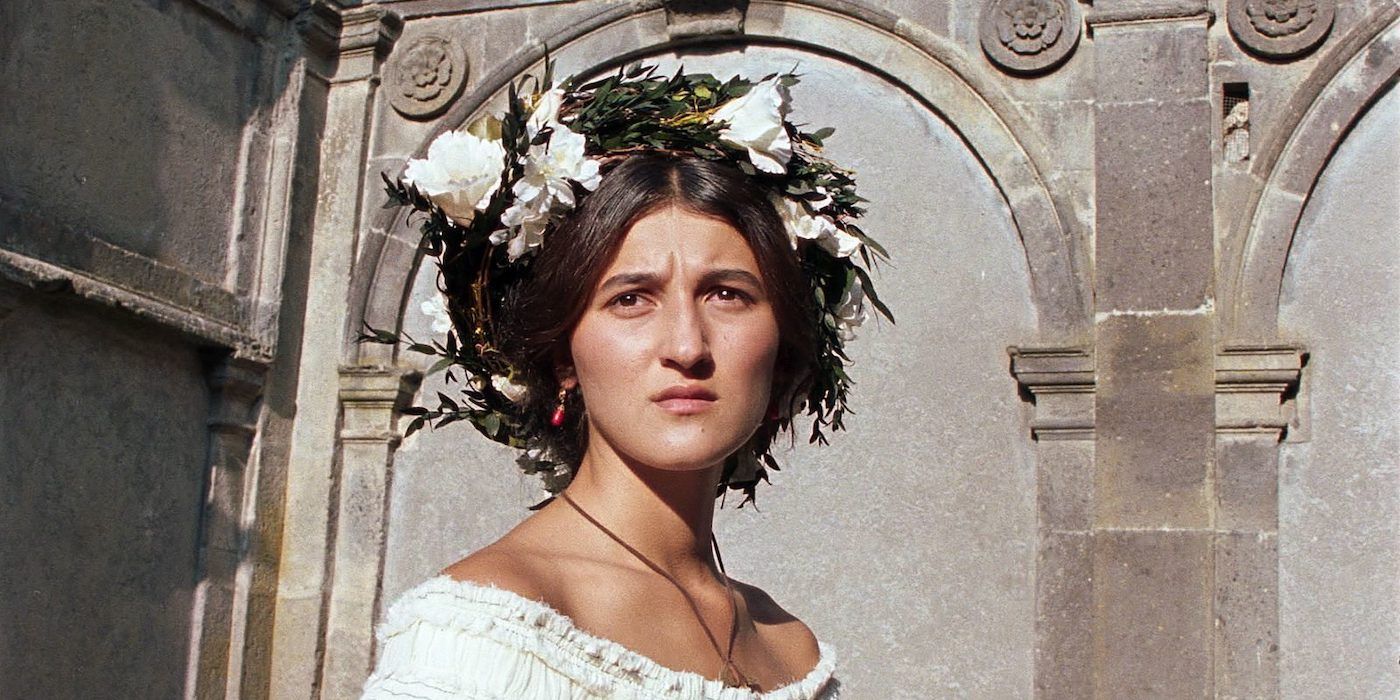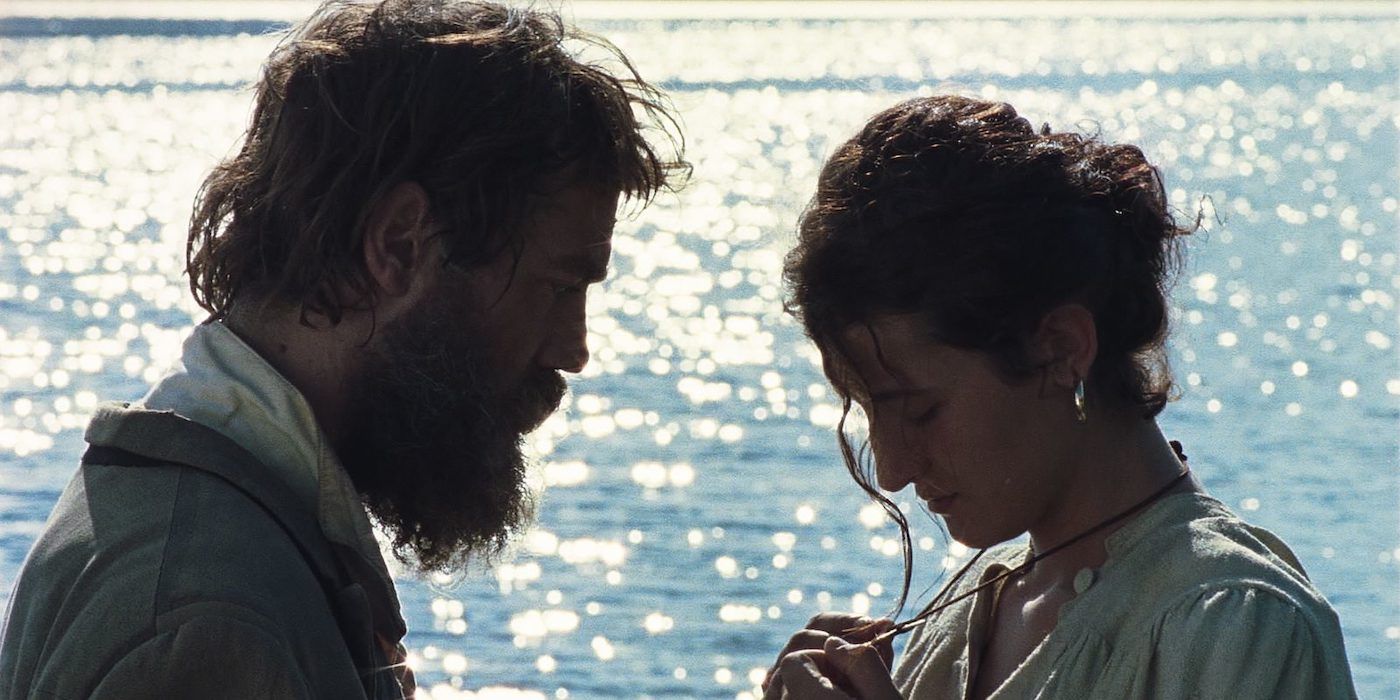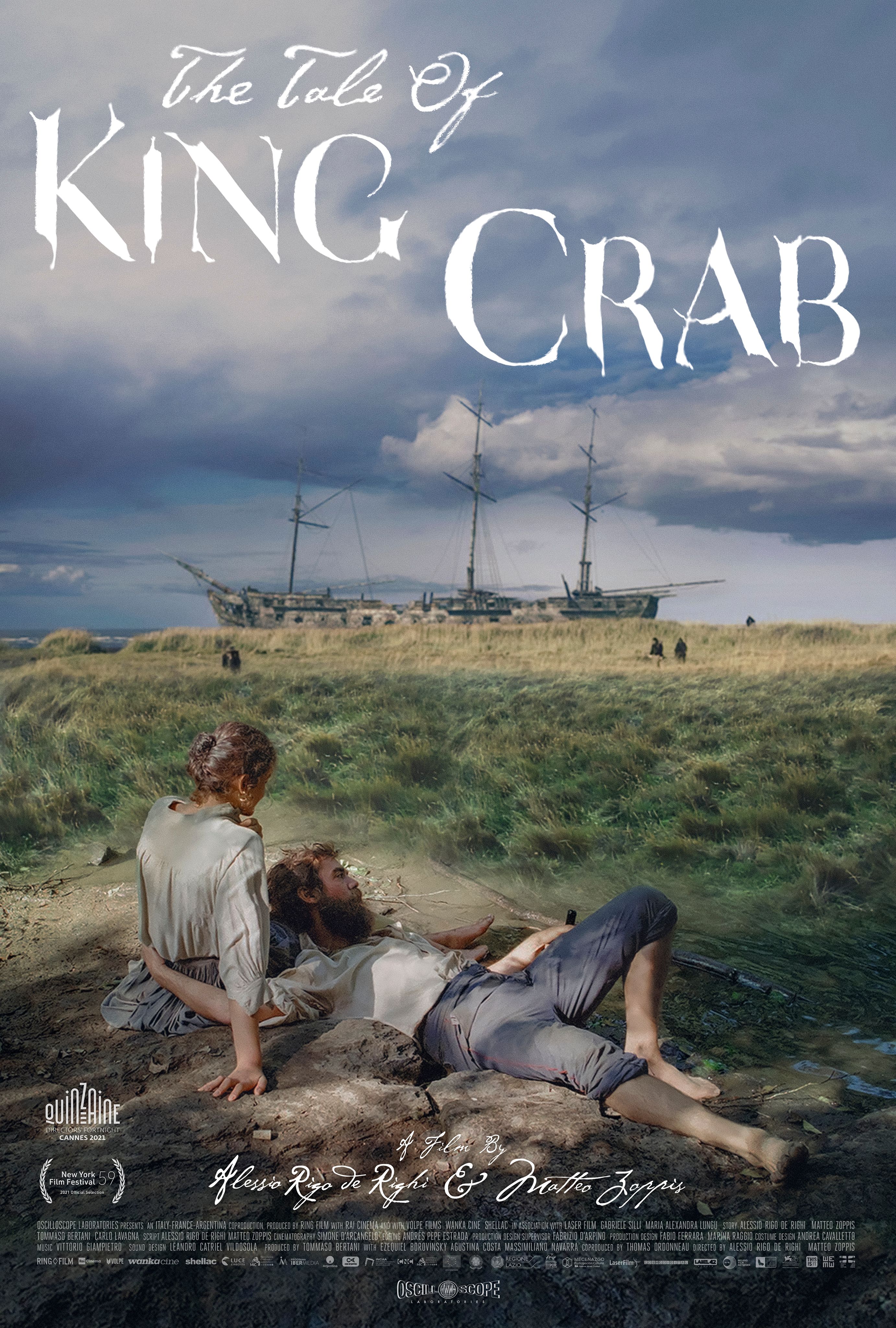The Tale Of King Crab moves at the pace of the sea creature it’s titled after, but that isn’t necessarily a problem. The feel of the film is very reminiscent of Italian pictures of the late 1950s and early 1960s, but it occasionally leans too far back into the past. Writer-director duo Alessio Rigo de Righi and Matteo Zoppis (Belva Nera) have a keen eye for isolationist themes and it comes across in both their choices, as well as the lead performance. Outside of one unnecessary storytelling device, The Tale Of King Crab is never melodramatic and always moves at its own pace.
Luciano (Gabriele Silli) wanders the countryside in a drunken stupor. Along the way, he meets men and women who occasionally find him charming, but — for the most part — have no time for his antics. His luck finally runs out when he is over-served and approached by soldiers as reckless as he is. Luciano is exiled and takes up with a group who is on the hunt for the fabled Janita gold. In this new land, disguised as a priest who has the means needed to find the gold, Luciano embarks on the journey with his new identity and a crab. According to legend, he is the map and the crab is the compass. The unlikely band of brothers follow the crab to their ultimate demise.
The Tale Of King Crab doesn’t show off, but it is quietly epic. When the film spreads its wings, it feels like anything is possible. Cinematographer Simone D’Arcangelo does a great job incorporating things like CGI ships with masterful wide shots of mountaintops. The look of the film is perhaps its greatest technical achievement. Many films are going for an 8mm cinematic look and, whether or not they use a digital or film camera, they are all still at the behest of the rest of the production. The Tale Of King Crab has the shot selection, the all-white, textured costumes, and natural light of an old-school Italian drama. Long takes of Luciano lounging in the wilderness have an authenticity not found in theaters today. Most notably, when entering the crabs’ home in one of the final scenes, audiences are treated to a water-filled bat cave baptism with heavenly lighting.
One drawback of The Tale Of King Crab is the storytelling convention. The group of old men who set up the tale feel irrelevant to the rest of the movie. They certainly give context to the sense of history the film is part of, but their presence outside of time steps on the classic tone that makes the best moments of The Tale Of King Crab. The pacing of the film is also an issue and it feels much longer than the hour and a half that it actually is. The first half of the film drags in comparison to the more exciting second half, but it does allow for more intriguing dialogue.
When Luciano is on the brink of self-destruction, his father sees a corpse. Cinematically, every part of the movie embodies the inner demon following him. The film really does show the tribulations of, “A man who cares about nothing.” The score also plays a role in the story. There are two main music cues in the film: African drumming that evokes tension and suspense and horns similar to what a hip-hop song might sample, each of which brings up the energy as needed.
Sections of The Tale Of King Crab feel like a play. Scenes like the Saint's Feast show off not only the camera work and use of natural lighting, but the costume design as well. “Not a prince, but a god.” The Tale Of King Crab doesn’t keep one's attention at first, but if the audience can make it past the period piece there is a thought-provoking western on the other end.
The Tale Of King Crab released in theaters April 15, 2022. The film is 91 minutes long and is rated R for nudity.




